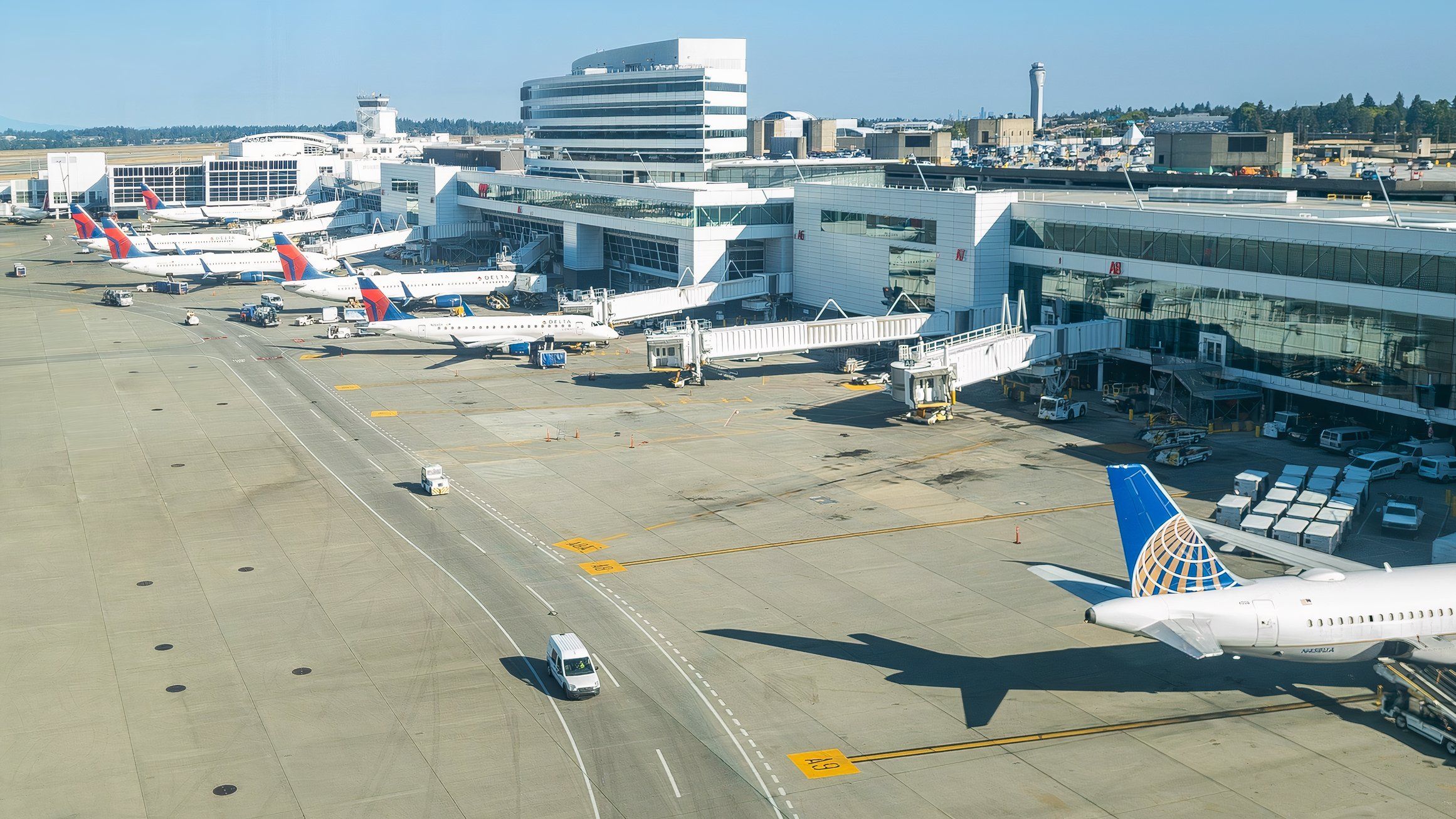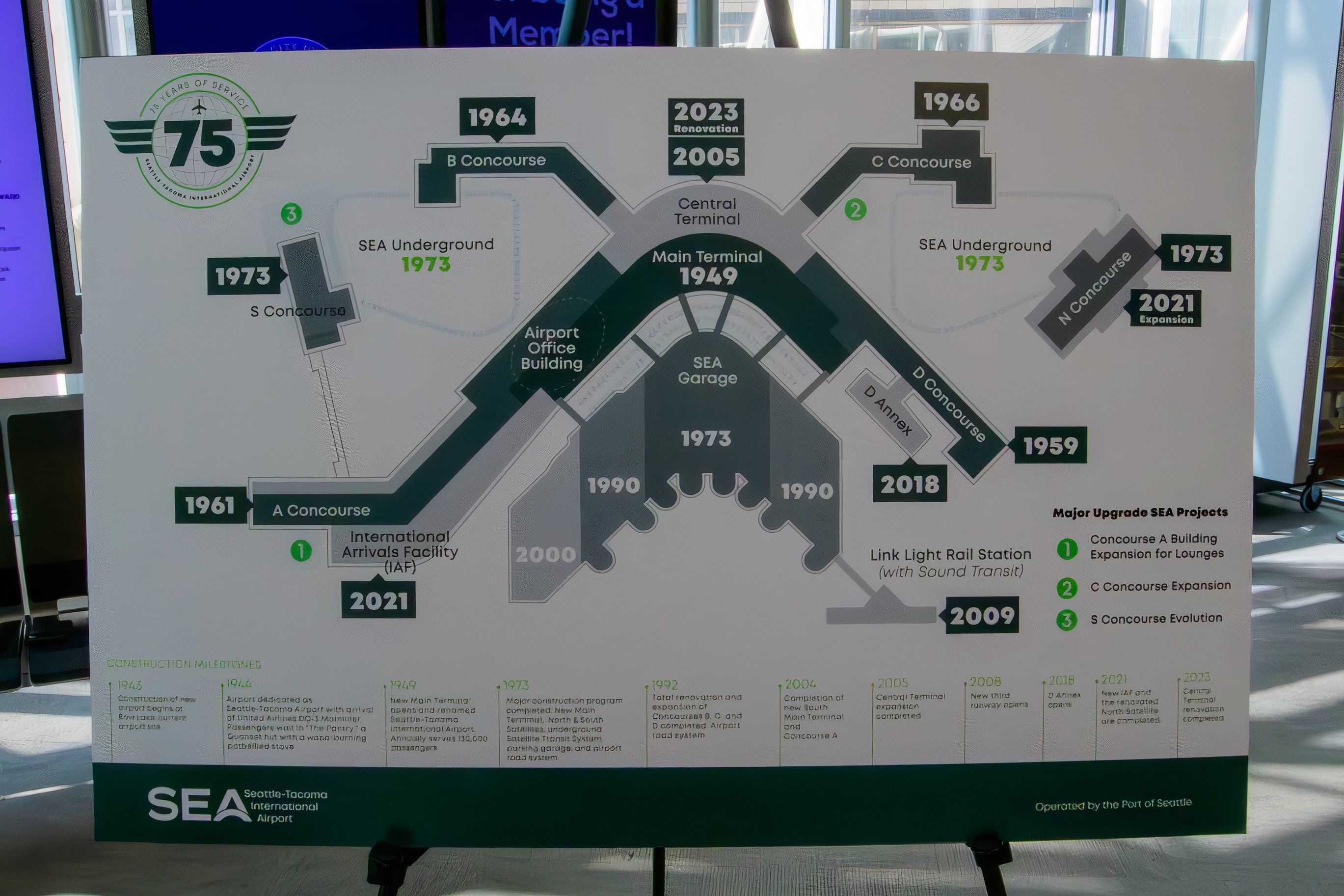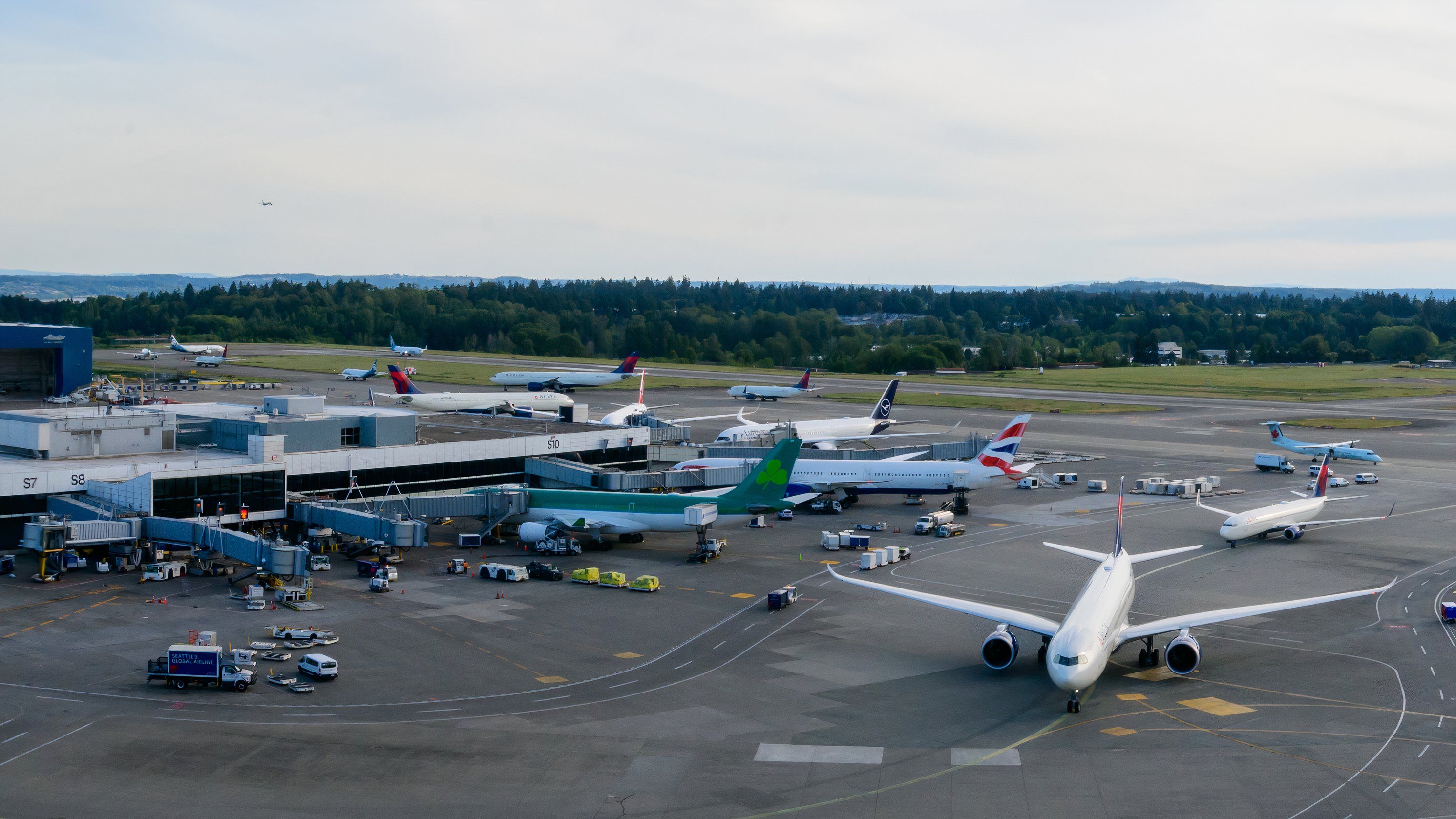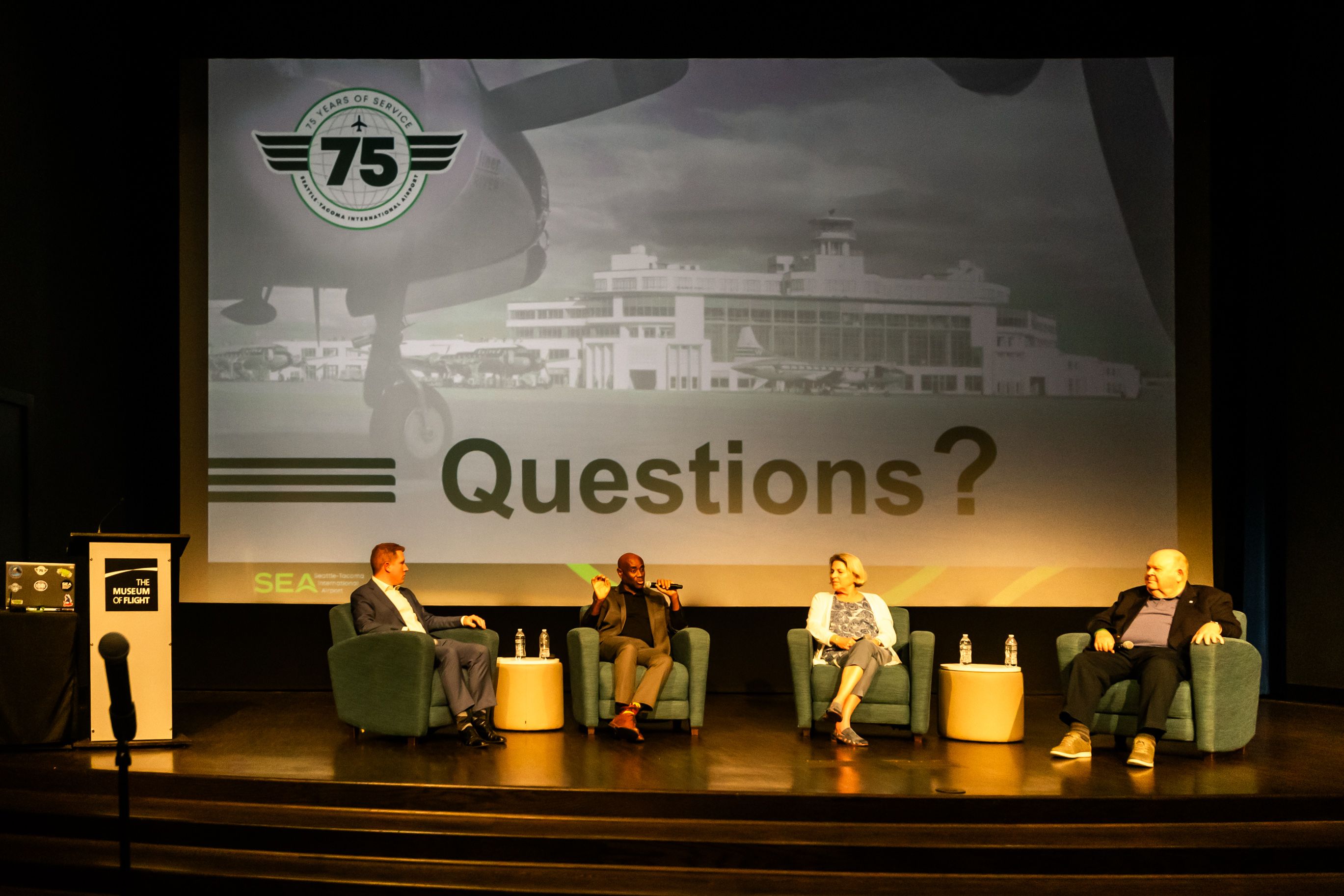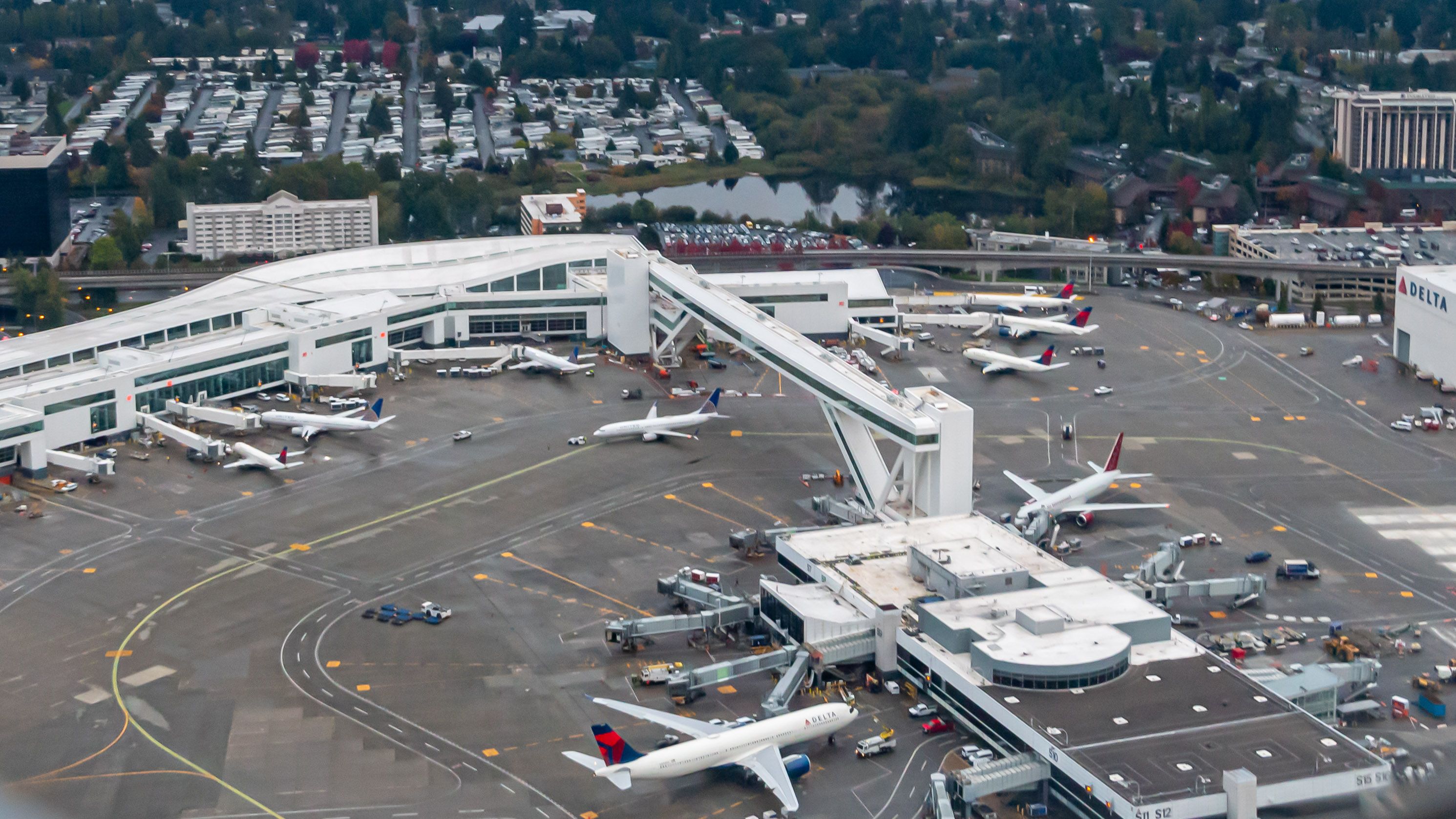Summary
- SEA grew from 10 to 610 daily flights in 75 years.
- Lack of gates is SEA’s major challenge for airlines.
- Sustainable Airport Master Plan in progress for SEA’s expansion.
For 75 years, Seattle-Tacoma International Airport (SEA) has served the Puget Sound and Washington State as a growing international airport connecting the Seattle-led megalopolis with the world. Now that SEA has enjoyed 75 years of growth and connects to 33 international destinations on 25 different airlines; SEA must continue to grow within a very constrained space as was discussed at a July 13 Seattle Museum of Flight event.
Going from 10 daily flights to 610 daily flights in 75 years
Currently, the Port of Seattle which operates SEA is releasing incrementally a documentary, “Elevated: 75 Years of Service at SEA”. One can watch and learn about SEA’s beginnings from “Episode 1: To 1949”.
According to the Port of Seattle, SEA had 10 daily flights by two airlines two years before the main terminal on September 1, 1947—Northwest Airlines and Western Airlines. One can read below the history of Northwest Airlines before being acquired by Delta Air Lines:
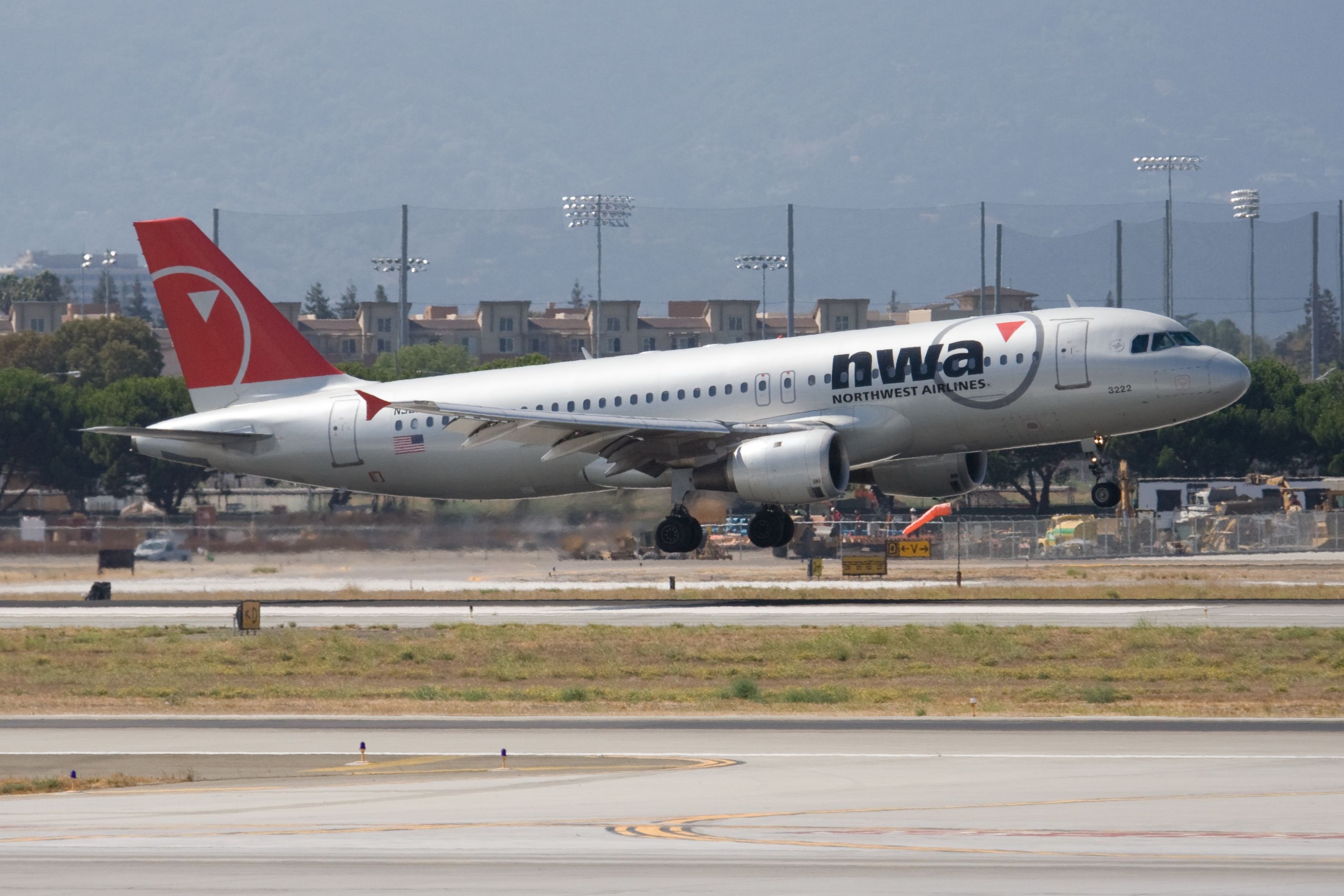
Related
Several Different Names: The Early History Of Northwest Airlines
The now defunct Northwest Airlines has experienced multiple different name changes over the years. Here is a summary of the airline’s history.
Below is a history of Western Airlines before Western Airlines became part of Delta Air Lines.
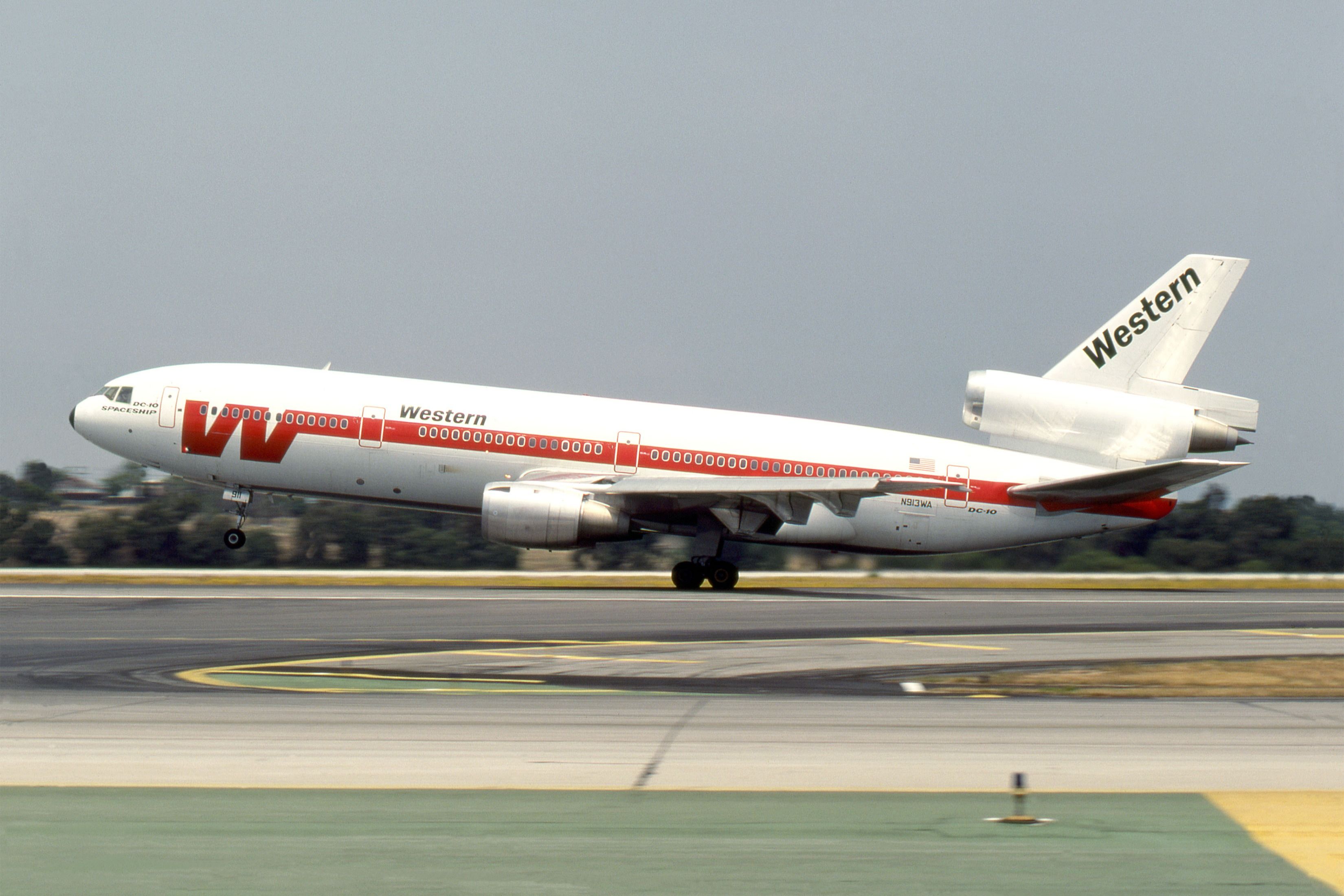
Related
What Happened To US Carrier Western Airlines?
The story of how a former mail carrier ended up merging with Delta Air Lines.
However, most airlines used nearby Boeing Field – and ironically, Seattle-Tacoma International Airport was built to relieve pressure from Boeing Field and Tacoma’s McChord Field, which is today Joint Base Lewis-McChord and a 100% military airfield. Meanwhile, Boeing Field only has Kenmore Air for scheduled service using Cessna turboprops to supplement seaplane scheduled services and tours.
But soon after the SEA terminal opened on July 9, 1949, “The four airlines that served the region shifted their flights from Boeing Field to SEA, which served 1,500 passengers a day on 60 scheduled flights.”
Now, in 2024, according to May 2024 SEA statistics, with an average of 610 daily cargo, passenger, and private flights in and out of SEA plus an average of over 150,000 daily passengers, managing SEA is a challenge.
“Running an airport is like running a city”
As Lance Lyttle, the current SEA Airport Managing Director, shared,
“I tell people that running an airport is like running a city. It’s just going to be more complicated because we do almost everything that a city does, and then we have airplanes to go with it as well.”
Throughout SEA’s history, SEA has had to address issues such as growth, sustainability and security – just as major American cities have the past 75 years.
Graphic: Port of Seattle
This article will focus on the growth aspect due to word length limits.
Addressing growth
One of Lyttle’s frustrations is the lack of current gates at SEA to meet the demand of the airlines. To Lyttle and the other panelists, SEA has always needed to grow. As Dunham explained during the lecture,
“Gates are our biggest challenges; we do not have enough gates to meet the demand of the airlines, especially during peak.”
As such, SEA sometimes has to have buses ferry passengers to and from the aircraft. One can read more about SEA’s constraints below from a September 2023 article:

Related
Inside Seattle Tacoma International Airport’s Constraints
A short discussion of the unique constraints Seattle-Tacoma International Airport (SEA) faces.
Sometimes, SEA has a backlog of aircraft waiting to take off, which can be quite annoying for those buckled in. According to a SEA spokesperson, the backups for takeoffs are due to a lack of space and landing aircraft trying to taxi from the three runways.
Photo: Joe Kunzler | Simple Flying
Finally, there is a Sustainable Airport Master Plan or SAMP in the works to add 19 additional gates and a second terminal plus expanding a taxi lane and queuing areas to add more capacity. The SAMP draft will come out in late 2024.
Growing while addressing sustainability concerns
The primary reason why former Port of Seattle Senior Director of Engineering, Environment, and Sustainability Elizabeth Leavitt was on stage was her persistent, diligent work to get SEA a third runway. As Leavitt explained, the years of work required to obtain permits and “advance the way that capital projects can be used to improve the environment” were worth the efforts to care for the regional environment and the economy equally to add SEA capacity.
Photo: Joe Kunzler | Simple Flying
SEA is also currently expanding again in 2024. One of those expansions is Terminal C, which will include an observation deck.
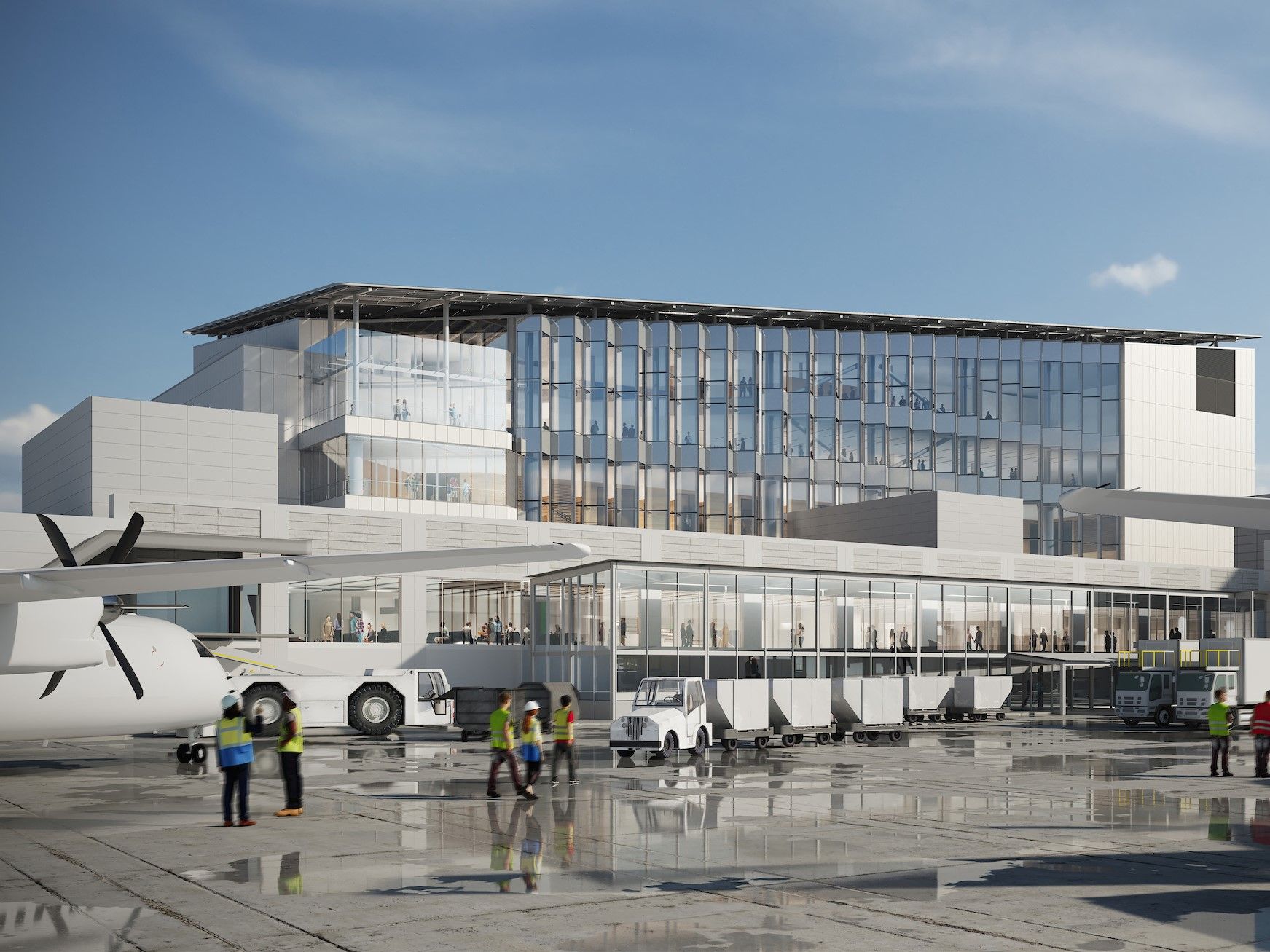
Related
Seattle Tacoma International Airport Moves Closer To Terminal C Expansion
The Port of Seattle Commission has approved a massive upgrade to Seattle-Tacoma International Airport, including a planespotting overlook.
But that’s just the beginning. As SEA Managing Director Lance Lyttle shared in a September 26 Port of Seattle statement,
“The C Concourse Expansion will offer more of what guests need by expanding dining and retail options. The project also offers more of what our guests love about SEA, like public art, musical performances, sensory room, mothers nursing room, Interfaith Prayer and Meditation room, and great gathering spaces.”
The Port of Seattle Commission had Commissioners inquire about particular elements, such as the sensory room. The sensory room is designed for those who need a moment to calm from the bustle of airports regardless of differing abilities, regardless of neurodivergent status.
Bottom line
Again, quoting Lyttle from the event,
“SEA has continued to evolve over the decades to meet the demand for travel and trade in our region. But if we don’t continue to grow, we’re going to have some serious challenges going over the region is growing, whether we like it or not people are going to travel, whether we have the facilities or not. The question is, what level of service we’ll be able to provide?”
So If you are a SEA passenger, please share in the thread below how SEA should expand?

